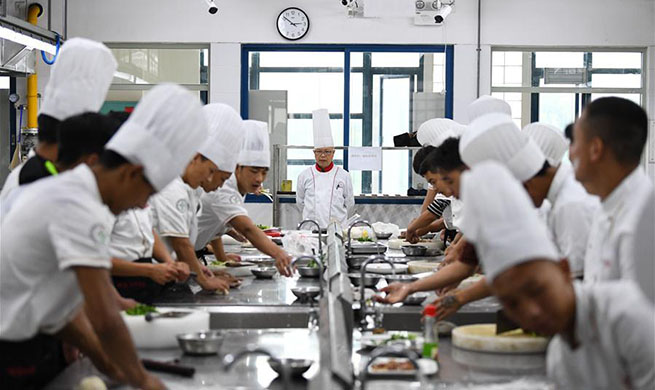BEIJING, May 21 (Xinhua) -- An international study has found how rice blast fungus spreads, providing insights on the control of rice blast, the most devastating rice disease in the world.
Rice blast fungus can infect rice plants at any growth stage and cause lesions on most parts of the plant. Rice blast may reduce both grain yield and quality. Under certain conditions, the disease can lead to total crop failure.
To fend off rice blast, farmers plant disease-resistant varieties of rice plants and spray fungicides. But rice blast fungus can adapt to overcome resistance and develop tolerance to the fungicides.
Scientists have been trying to understand the cellular functions used by the fungus to infect rice plants to better prevent and control the rice disease.
In the new study, researchers from China's Nanjing Agricultural University and Louisiana State University in the United States revealed how a type of protein named MoAbp1 plays a crucial role in the fungus' potential capacity to cause the disease.
They found that rice blast fungus forms a special infection structure that applies mechanical force to rupture the rice leaf cuticle and the protective, waxy layer covering the leaf. Once inside the host, the fungus can live off the rice plant's nutrients to spread the infection.
The researchers reported that the two processes which are necessary for the growth of the fungus are enabled by the protein MoAbp1.
The findings have been published in the journal Molecular Plant-Microbe Interactions.
The study is expected to help develop new approaches for the control of rice blast fungus infection and also shed light on the study on the virulence mechanism of plant fungi.

















